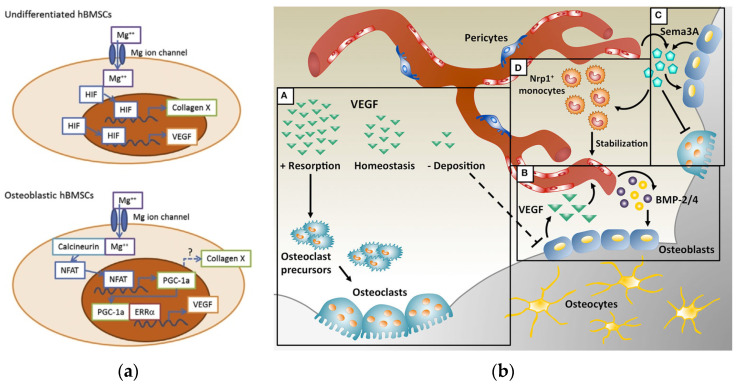Figure 1.
(a) Schematic diagram of the putative intracellular signaling cascades upon stimulation of hBMSC with magnesium ions. The addition of a magnesium cation causes an increase in the intracellular Mg ion concentration in undifferentiated BMSCs. The HIFs then migrate to the cell nucleus and induce the production of COL10A1 and VEGF. On the other hand, in differentiated BMSCs, the Mg ion activates the production of PGC-1α (via an unknown transcription factor), which induces the production of VEGF. Adapted with permission from ref. [30]. Copyright 2014, Elsevier. (b) Combination of angiogenesis and osteogenesis in intramembranous ossification. (A) Physiological levels of VEGF maintain bone homeostasis, whereas too little VEGF interrupts the differentiation of osteoblasts and too much VEGF increases the recruitment of osteoclasts, resulting in bone resorption. (B) During bone repair, VEGF is produced by osteoblasts and promotes the migration and proliferation of endothelial cells. In turn, endothelial cells secrete osteogenic factors such as bone morphogenetic protein (BMP)-2 and BMP-4, which support osteoblast differentiation. (C) VEGF dose-dependently regulates the expression of the semaphorin class of molecules 3A (Sema3A) in endothelial cells, while Sema3A from various sources inhibits osteoclast differentiation and stimulates bone deposition. (D) Sema3A is also responsible for a set of neuropilin-1 (Nrp1+)-expressing monocytes that contribute to vascular stabilization. Reprinted from ref. [31].

